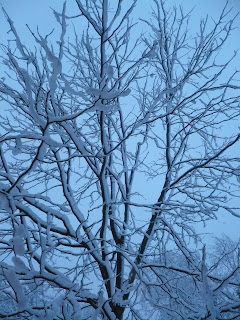
We do not inherit the earth from our ancestors, we borrow it from our children.
~Native American Proverb
There is a natural connection between children and the landscape. They are born still tethered to the energies of the universe. A simple stream will inspire awe, wonder and curiosity without any pushing or prodding from an adult. In fact, it is the adult that needs the nudge to move closer.
I am often deeply moved by watching how easily my children embrace the land with full acceptance. How they are able to find intrigue in the simplest forms of nature. For adults it is much harder. We have lost the purity of youth that leaves the door to flows of energy wide open. Children just sense the life...or the lack of it...with a profound acuteness.
In practicing yoga this winter, I am taking a journey through the chakra system of the body. It is a delightful practice which surprises me often. Starting at the base of the spine, at the base of this energy system, we are exploring how we are rooted, grounded in life. It is hard for me not to make a connection to the earth and to plants as I start this journey. I am a novice and open, like a child, to the newness of this teaching.
This energy system is unseen (for most of us anyway) and it takes a certain stillness to tap into  the body in this way. It takes some practice and some faith. For me, connecting this to the energy of plants is helpful. I love them so much and am so inspired by how they emerge from dormancy each spring into a full and glorious picture of life and then slowly wither and fall into a dream state of stillness again as winter returns.
the body in this way. It takes some practice and some faith. For me, connecting this to the energy of plants is helpful. I love them so much and am so inspired by how they emerge from dormancy each spring into a full and glorious picture of life and then slowly wither and fall into a dream state of stillness again as winter returns.
 the body in this way. It takes some practice and some faith. For me, connecting this to the energy of plants is helpful. I love them so much and am so inspired by how they emerge from dormancy each spring into a full and glorious picture of life and then slowly wither and fall into a dream state of stillness again as winter returns.
the body in this way. It takes some practice and some faith. For me, connecting this to the energy of plants is helpful. I love them so much and am so inspired by how they emerge from dormancy each spring into a full and glorious picture of life and then slowly wither and fall into a dream state of stillness again as winter returns.The landscape industry is a fast paced business of aesthetics that has a hard time remembering that each and every plant is an energetic whole. That each garden is a community of plants interacting energetically (as well as biologically) with one another. It is easy to use up that energy with careless use of our earth. We see that with each account of environmental shift reported in the news.
My wish is that in 2010, I am able to connect with a community of garden lovers that want to restore the environment one small garden, landscape or park at a time. By acting locally with our own small borrowed slices of earth we can effect change by adhering to sustainable landscape practices, by considering the garden as an energetic community, and by committing to conscientious design, installation and care of the land we are borrowing from our children.
Next time we will explore the first chakra, earth energy, and the root systems of plants...
Happy Gardening








